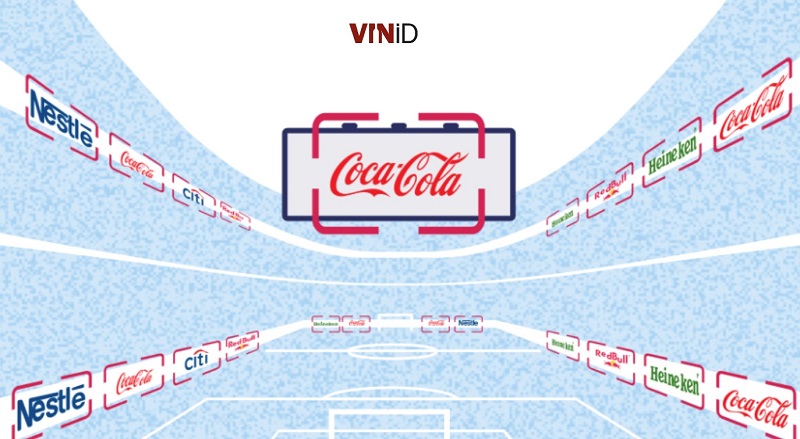Sport has been a vital part of our society for many millennia, forming icons through the meetup of mental and physical prowess. However, what is sponsorship in sports and how does sponsorship in sports help brands to elevate their brand value and sales?
Let’s learn in detail about sponsorship in sports and how it works to elevate teams and brands:
What Is Sponsorship in Sports?
Sponsorship in sports means financial help for sports (whether this’s an organization, performer, or event) by an external body (it can be an organization or an individual) for the help of both parties at the same time.
Sponsorship in sports happens at all sports levels. School teams might have sponsored kits whereas elite athletes might be paid a lump sum to use branded equipment or wear certain sportswear during the match.
So, Sponsorship in sports can offer in-kind or financial payments. Sports sponsorship means that both parties (the team and the brand) acquire usefulness from the deal.
Types of Sponsorship in Sports
Teams & Sport Clubs
Display banners, wear kit, have a brand title for the teams or the grounds or court/stand in the grounds, and pay travel and competition costs.
Events
They are allowing their logo to be used on sponsors’ items, offering attendees free products, and contributing money to the event’s operation.
Individuals
Wear a specific brand, display a logo, support goods, and cover expenditures associated with competitions, training, and travel.
Sports
Rename cups, leagues, and competitions, brand their growth programs, and enhance facilities.
Pros Of Sports Sponsorship for Sport Teams
- Teams & clubs – equipment, subsidizes kit, clubhouse, or grounds maintenance.
- Individuals – covers costs like the kit, travel, competition fees, equipment, accommodation, and time to train.
- Events – Gives venue engagement, hospitality, catering, publicity, programs, and officials’ expenses.
- Sports – Covers costs for coach development and coaching, beginner programs, and talent development.
Cons Of Sports Sponsorship for Sport Teams
- A sportsperson can become dependent on an individual sponsor. If the person denies to cover expenses then the sportsperson may lose his/her cool
- Sponsorship can be easily withdrawn or limited –so there is no security.
- Charitable sponsorship is just available to the selected few.
- Some sponsorships (for instance, alcohol) give a bad impression of the sport.
- The difficulty of juvenile sports or those sports with little to no media range to draw sponsorship.
- Performers, events, and teams can be exploited or manipulated to suit the sponsors.
Pros Of Sponsorship In Sport For Sponsors
- Advertise services and products to increase brand value.
- Raises understanding of their brand or company.
- Improves the company’s brand value
- Reduces tax via tax relief.
- Stimulates a healthy and positive image of their business by linking that with widespread activity, although the item isn’t particularly healthy.
- Boosts sales and revenue via increased exposure to media.
- Provides incentives or rewards for customers and staff.
Disadvantages Of Sponsorship in SPorts for Sponsors
- In case the occasion is disrupted, exposure to media and promotion possibilities are lost.
- Uncertain asset– sporting success isn’t guaranteed.
- In case the performers or sports cause lousy advertising, this badly reflects on the sponsors.
How Brands Position Themselves With Sponsorship in Sports?
In today’s comprehensive world of marketing and media rights, there are few “off the shelf” solutions for brands as well as, if they’re doing marketing perfectly, then placement of a simple logo will not offer sufficient ROI (return on investment) on sponsorship.
Brands investing in sports should look at the larger picture to encounter fans and not depend on only one piece of product. This could consist of a variety of options. Such as:
On-kit Sports Sponsorship
Shirt or on-kit sponsorship in sports is the most common form of advertising through sports. In many areas, you must have seen that the payers are wearing a particular type of shirt with logos.
These are called on-kit sports sponsorship. Here, the sponsor asks the team to wear a kit that will bear their company’s logo. In today’s world, this type of sponsorship is one of the most common ones.
However, this type of sponsorship in sports is certainly not a new thing. This type of sponsorship has been there for ages and promotes brands around the world.
In-Arena Visibility
Since the 1970s, when advertising boards first started to appear, perimeter advertising has added color to most athletic events. Before LED and rolling boards became more frequently used, these were initially static.
Virtual marketing, where rights holders can sell the same place in an LED to various, regional advertisers who may target specific locations, is seen by many people in the world of sports as the next stage.
This has already occurred with great success in sports like football, ice hockey, handball, and Formula One, and it does open up new revenue streams and lower entry hurdles for companies that are only interested in marketing to a small portion of the global population.
However, as with all sponsorships, it must produce a great experience for all parties involved, including fans, brands, and sponsors.
Digital Sponsorship in Sports
Social media and digital advent presented a new chance for companies to reach customers in a better-targeted way.
When it came to the fact that who they were communicating to and what kinds of advertising they responded favorably to, there was now a two-way channel.
First up were banner adverts on sports websites, which provided direct links to goods and services and significantly lowered the entry hurdle compared to traditional kit and on-site sponsorship.
Following then, it transitioned to social media, where sponsors used their marketing privileges to create sports content curatorships through their channels.
This has evolved into a more targeted strategy, and sponsors may now give customized material to niche audiences thanks to automated content development.
Final Words
Sponsorship in sports is a tried-and-tested advertising strategy, however, it is growing rapidly. Brands need to create a clear plan that fits with their marketing goals and appeals to their target demographic if they want to stay ahead of the curve.






